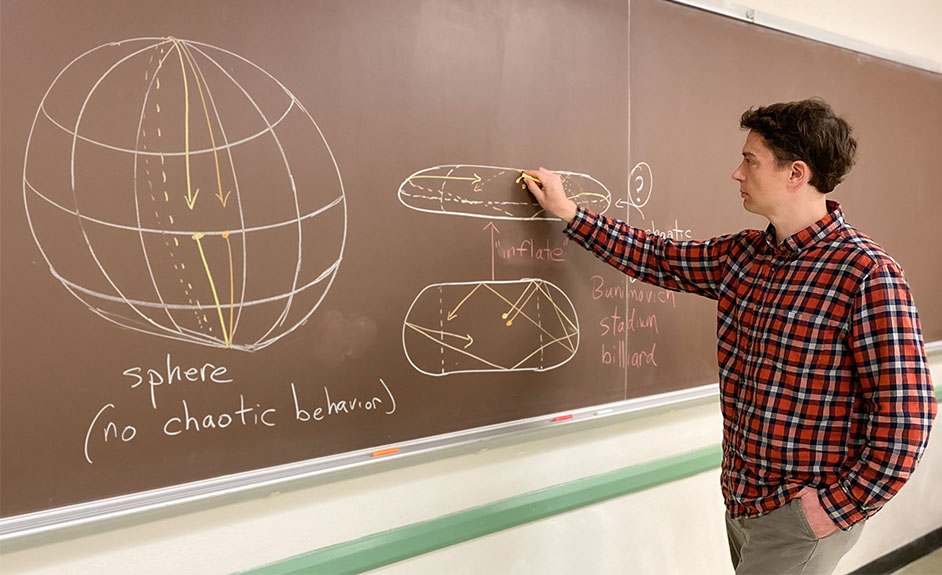Mathematics Associate Professor Will Take Research Leave for Academic Year
The Simons Foundation awarded Vaughn Climenhaga, associate professor of mathematics, a Simons Fellowship in Mathematics for the 2022-2023 academic year.

Climenhaga will take a sabbatical research leave to focus on his work without administrative or teaching duties during the fellowship support period. He also plans to work on a book project.
“I am delighted to have been chosen,” said Climenhaga, faculty at the University of Houston's College of Natural Sciences and Mathematics, “I’m excited to have the opportunity to immerse myself in a research problem that has been fascinating me recently.”
That research tackles a complex topic called chaotic behavior. It exists in many natural systems like the weather, heartbeat irregularities and fluid flow. Specifically, he will be studying chaotic behavior in geometric systems, with the goal of finding a new mechanism for chaos in positive curvature.

To explain – Climenhaga says to imagine an ant walking along the surface of a sphere, moving directly forward without ever turning to the left or right. Its path will curve to follow the sphere's natural curve.
Two ants that walk side by side will never separate by much, though their paths will occasionally cross over. For example, if they begin walking at the equator and continue due south, their paths will cross at the south pole and will cross again at the north pole, after which they will both be walking south again.
This all changes if the sphere is inverted so that there are saddle-like curvatures on the surface. These curvatures are known to mathematicians as “negative curvature.” In this case, when the ants pass through the saddle region, any small differences in their path will be amplified, and they will separate. He explains this can result in long-term behavior that appears random or “chaotic.”
If smaller distortions of the sphere are made and there are no saddle-like regions, then mathematicians say the curvature is positive everywhere. These smaller distortions can produce some chaotic behavior, he said. However, mathematicians do not know whether it is possible to make these distortions in such a way that a randomly placed ant is likely to have persistent chaotic behavior.
“The goal of my research will be to carry out a plan I have for creating this extra chaotic behavior using a method of ‘smoothing singularities,’” said Climenhaga. “Although the system I am starting with is a simple model, the connection between geometry and dynamical behavior runs deep.”
The mathematical techniques developed, he said, will have broader applications to systems appearing in physics and other sciences.
Climenhaga’s leave begins September 1, 2022, and ends August 31, 2023.
The fellowship is given based on an applicant’s scientific accomplishments during the past five years and on the work to be done with the funding. Climenhaga received a prestigious five-year National Science Foundation CAREER award in 2016.
- Rebeca Trejo, College of Natural Sciences and Mathematics